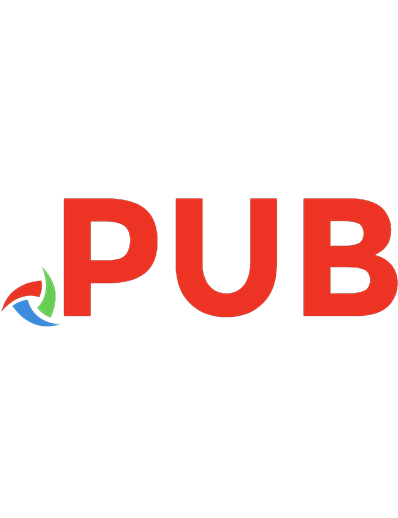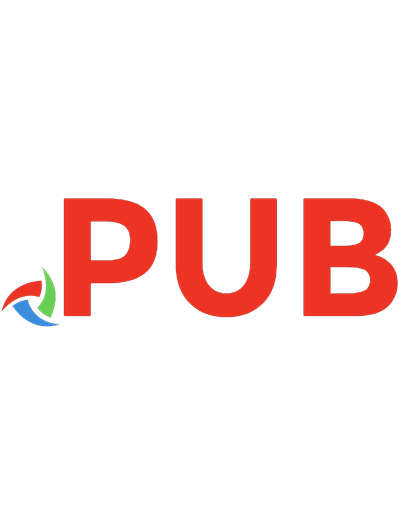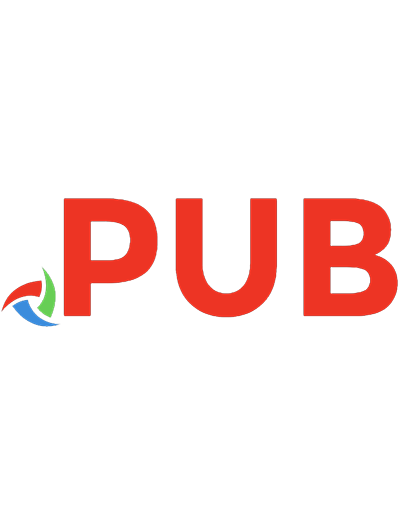Genghis Khan: His Life and Legacy 0631167854, 9780631167853
Reconstructs early Mongol society, recounts how Genghis Khan organized the Mongol tribes into one powerful empire, and e
898 164 6MB
English Pages 313 [331] Year 1991
Polecaj historie
Table of contents :
Contents
Illustrations
Editorial Foreword
Preface
1. The Origins and Boyhood Years of Genghis Khan (Temuchin)
2. Rise to Supremacy on the Steppe
3. Genghis Khan, Kuler of the Mongol Empire
4. Personality and Achievements
5. The Structure of the Mongol World Empire
Notes
Glossary
Main Personalities
Dynastic Tables
Chronology
Map of the Campaigns
Bibliography
Index
Citation preview
Genghis Khan
Genghis Khan H i s L ife a n d L e g a c y
Paul Ratchnevsky Translated and Edited by Thom as Nivison Haining
BLACKWELL
Oxford UK fr Cambridge USA
This English translation copyright © Basil Blackwell Ltd 1991
First published 1991* First published in USA 1992 First published in Germany as Cinggis-Kban: Sein Leben und Wirken by Franz Steiner Verlag GMBH Original German text copyright © 1983 Franz Steiner Verlag Basil Blackwell Ltd 108 Cowley Road, Oxford, 0 X 4 1JF, UK Basil Blackwell, Inc. 3 Cambridge Center Cambridge, Massachusetts 02142, USA All rights reserved. Except for the quotation of short passages for the purposes of criticism and review, no part of this publication may be reproduced, stored in a retrieval system, or transmitted, in any form or by any means, electronic, mechanical, photocopying, recording or otherwise, without the prior permission of the publisher. Except in the United States of America, this book is sold subject to the condition that it shall not, by way of trade or otherwise, be lent, re-sold, hired out, or otherwise circulated without the publisher’s prior consent in any form of binding or cover other than that in which it is published and without a similar condition including this condition being imposed on the subsequent purchaser. British Library Cataloguing in Publication Data A CIP catalogue record for this book is available from the British Library. Library of Congress Cataloging in Publication Data Ratchnevsky, Paul. [Cinggis-khan, sein Leben und Wirken. English] Genghis Khan, his life and legacy/by Paul Ratchnevsky; translated and edited by Thomas Nivison Haining. p. cm. Translation of: Cinggis-Khan, sein Leben und Wirken. Includes bibliographical references and index. ISBN 0-631-16785-4: 1. Genghis Khan, 1162-1227. 2. Mongols—Kings and rulers —Biography. I. Haining, Thomas Nivison. II. Title. DS22.RS3713 1992 950’.2’092—dc20 [B] 91-2295. CIP Typeset in 11 on \2V i pt Sabon by Times Graphic, Singapore Printed in Great Britain by Hartnolls Limited, Bodmin, Cornwall
Contents
List of Illustrations
viii
Editorial Foreword
x
Preface 1
2
The Origins and Boyhood Years of Genghis Khan (Temuchin)
xiii
1
Homeland and ancestry Temuchin’s birth Temuchin’s youth The murder of Bekhter Temuchin in Tayichi’ut captivity Horse rustling Temuchin seeks a protector The Merkit attack The break between Temuchin and Jamuka The road to power
1 15 19 23 24 28 31 34 37 39
Rise to Supremacy on the Steppe
42
Temuchin’s election as khan The struggle between Temuchin and Jamuka The quarrel with the Jurkin A gap in Temuchin’s life history? Toghrul flees to Kara-Khitai The attack on the Tartars The struggle against Sacha-beki The battle with Buiruk-khan
42 44 47 49 50 52 54 57
vi
3
4
5
Contents The election of Jamuka as Gurkhan The extermination of the Tartars The breach in the alliance between Temuchin and Wang-khan Temuchin’s messages to his opponents The end of the Kerait empire War against the Naimans Jamuka’s end
61 66 67 73 78 83 87
Genghis Khan, Ruler of the Mongol Empire
89
The Khuriltai of 1206 The shaman and the emperor The consolidation of the empire War with the Tanguts The war in China The expedition against Kuchlug War with Sultan Muhammad of Khwarazm The world conqueror and the Taoist monk The death of Jochi The return to Mongolia Genghis Khan’s last campaign The death and burial of Genghis Khan
89 96 101 103 105 118 119 134 136 137 140 141
Personality and Achievements
145
Thé man The conquests
145 169
The Structure of the Mongol World Empire
175
The administration of the empire Genghis Khan’s legislation Genghis Khan’s religious policies The legacy of Genghis Khan
175 187 197 198
Notes
214
Glossary
274
Main Personalities
276
Dynastic Tables
279
Chronology
281
Coîttents Map of the Campaigns
vii 284-5
Bibliography
286
Index
300
Illustrations
1
2 3 4 5 6 7 8 9 10
Fourth-century bc (possibly proto-Hun) stone-slab cist graves in Orkhon River Valley. (Thomas Nivison Haining).
3
Orkhon Turk burial circles (fifth/sixth century) in Orkhon River Valley. (Thomas Nivison Haining).
6
Khar Balghass. Eighth-century Uighur capital. (Thomas Nivison Haining).
9
Khar-bukh balghassun. Tenth-century Khitan city. (Thomas Nivison Haining).
11
Genghis Khan’s birthplace memorial. Dadal Somon, Khentei Province. (Professor Sagaster).
16
Landscape in the Orkhon River country of Central Mongolia. (Thomas Nivison Haining).
30
Herdsman and family in front of Ger. (Thomas Nivison Haining).
45
Hill landscape with Tula River. (Thomas Nivison Haining).
60
Stamps commemorating the 750th anniversary of the Secret History.
74
The enthronement of Genghis Khan at the 1206 Khuriltai. Rashid ad-Din Ms. (Bibliothèque Nationale, Paris).
91
Illusttations
ix
11
Example of old Mongol script.
96
12
The Mongol shaman Teb-tengri.
97
13
Genghis Khan in pursuit of his enemies. (Bibliothèque Nationale, Paris).
Ill
Ögödei Kha’an. (National Palace Museum, Taiwan, Republic of China).
127
14
/
15
The Mongols’ captives led away. (Bildarchiv Preussischer Kulturbesitz).
132
Genghis Khan’s camp. (Bibliothèque Nationale, Paris).
136
Lamentation at the bier of Genghis Khan. (The Warbung Institute).
143
Genghis Khan. (National Palace Museum, Taiwan, Republic of China).
146
19
Shaman devil mask. (Thomas Nivison Haining).
156
20
Khubilai Kha’an. (National Palace Museum, Taiwan, Republic of China). 162
21
Paitze. Tablet of authority issued by Mongol Kha’ans. 182
22
Seal of Mongol Kha’an.
186
23
Karakorum and Erdene Dzuu Monastery. (Thomas Nivison Haining).
200
24
‘The Silver Tree’ at Karakorum.
202
25
1962 memorial celebrating the eighth centenary of Genghis Khan’s birth. (Professor M. Gervers).
211
16 17 18
Editorial Foreword
The avowed aim of Ratchnevsky’s Cinggis-Khan: sein Leben und Wirken is ‘to attempt to approach historical truth by undertaking a critical comparison of the original sources’. It is thus not surprising that the original is a work of great complexity, containing not only several hundred source references scattered throughout the text, but also more than 650 footnotes, many of great length and containing much substantive material. (The opening 450 words of the text of chapter 3, for example, attracted almost 1,100 words of notes!) An early decision was taken by the publishers that, while striving to maintain the academic integrity of the original work, every effort should be made to present the English language version, Genghis Khan: His Life and Legacy, in a form which would make the book accessible to general as well as specialist readers. The text has, therefore, been purged of all references, which have been incorporated in the endnotes, and some 35 per cent of the substantive material in the original footnotes has been rewritten into the text. New appendices (Dynastic charts, Person alities, Chronology and Glossary of Foreign Terms) have also been added; these, it is hoped, will steer the reader through this exhaustive study of the early Mongol conquests. A text based upon such a wide linguistic range of sources (Mongol, Turkic, Persian, Chinese and Russian are the major ones) presents any translator/editor with a veritable minefield. There is no universally accepted system of transliteration from Mongoliàn into English: ninety-one English language summaries of learned papers delivered at the August 1990 conference on the
Editorial*Foreword
xi
Secret History which I attended in Ulan Bator provided evidence of some ten conflicting system^ - not surprising, perhaps, given the different periods of the Mongol language and the idiosyncratic nature of the spelling in the Secret History. In addition, many Mongol words have commonly accepted English forms which differ considerably from the original Mongol spelling and, indeed, from scholarly transliterations; such accepted variants have been favoured in this translation. Add to these factors the differing German and English systems of transliteration, and one cannot hope to cross no man’s land unscathed. One can only seek to be as consistent as possible and hope that the frequendy strange names may be in forms which readers will find familiar or at least acceptable. As regards detailed transcription, I have striven to do no violence to Mongol rules of vowel harmony. I have retained the Mongol diagraph kh, and, while I have transcribed the Mongol vowels y and Y (normally transcribed as u and tí) with a common u, I have felt it essential to retain ö as the transcription for the distinctive Mongol vowel S. I have had the benefit of expert guidance in Arabic-Persian transcription and trust that I have not deviated too far from that guidance. In the case of Chinese names and places I have, with relief, usually felt able to adhere to Ratchnevsky’s use of Pinyin. I have favoured k rather than q in transliteration and have been sparing in the use of diacritical marks in the text. I have, however, retained diacritical marks in the Notes and Bibliography in the hope that this will be welcomed by and useful to specialist readers. Ratchnevsky points out that several women exerted consider able influence on Genghis Khan at different times in his career. Similar influences - quite apart from that of my commissioning editor, Alison Dickens and my desk editor, Pamela Thomas - lie behind the translation and editing of this English language edition of Ratchnevsky’s biography of the World Conqueror. Mme Ochir Ina of Ulan Bator, sister-in-law of the great Mongolian writer Academician Rintchen, guided my first faltering steps in Mongolian history some twelve years ago; the late Lady Bettina Crowe (the author Peter Lum) encouraged me in my further studies and, because she always insisted that English-speaking readers deserved a new and authoritative biography of Genghis Khan, perhaps unwittingly guided me towards this present task;
xii
Editorial Foreword
my wife, Patricia, has not only shown much patience and understanding but has used her expertise’in English language and literature to improve many shortcomings in my original manu script. I also owe a deep debt of gratitude to Dr David Morgan of the School of Oriental and African Studies, London. N ot only did he advocate the production of an English language version of Ratchnevsky (as, indeed, did Professor Charles Bawden), he persuaded me to undertake the task of translation and editing and my publishers to accept me. He also read my translation in manuscript, offering many valuable comments and corrections. He was, indeed, a ready source of advice at every stage. The reader must now pass judgement whether the final offering, mine alone, justifies the encouragement and expert advice which has been so generously put at my disposal. Thomas Nivison Haining
Preface
At the begining of the thirteenth century a small nation of hunters and herdsmen brought the Turkic-Mongolian peoples of Central Asia under its sway and in subsequent campaigns of conquest subjugated the most powerful and civilized states of Asia. The man who led this nation to victory was Temuchin, ‘the smith’, better known to history by the title which he adopted in 1206, Genghis Khan, ‘The World Conqueror’. The sources available to us originate from contemporaries or from witnesses of the aftermath of Genghis Khan’s campaigns of conquest. These sources contain contradictory statements, their individual biases springing from the subjective attitude of the authors towards the World Conqueror, the aim of the work and the dependent relationship of each author on those for whom the work was written. The present work will attempt to approach historical truth by undertaking a critical comparison of the original sources. The written record of Genghis Khan’s life and of the struggles for supremacy on the steppe, derives from two Mongolian works: Mangqolun niuca tobchan (The Secret History of the Mongols), which survived in Chinese phonetic script1 and in excerpts in Uighur script cited in the Altan tobchi (Golden Summary), also from the Altan debter (Golden Book), which has been lost, but which was known in the thirteenth century to the Persian chronicler, Rashid ad-Din, and which served as the source for the Chinese language chronicle, Shenwu qinzheng lu (The Campaigns of Genghis Khan), and for the Yuanshi (The History of the Yuan Dynasty).5
XIV
Preface
*
The Secret History was written immediately after Genghis Khan’s death and it has been traditionally assumed that the Year of the Rat cited in the colophon refers to the year 1240. Established anachronisms in the text of the Secret History have, however, led to the postulation of a later dating,4 but fresh and quite independent arguments have more recently been advanced to support the thesis that the original text dates from 1228.5 The veterans of the military campaigns, gathered at the Great Khuriltai held by the Kerulen River would, during the long evenings, have recounted their deeds of valour; these stories provided the material for a work in which the anecdotes are only loosely connected. The author, possibly Shigi-Khutukhu, the adopted son of Genghis Khan, who was reared in the Conqueror’s household, accompanied Genghis on campaigns and was one of the first Mongols to learn the Uighur script, was obviously not concerned to offer a coherent picture of the course of history; his interest focused on the deeds of his heroes. Judgements differ regarding the value of this work as a historical source. In form the Secret History closely resembles an epic poem in which imaginary dialogue, romantic embellishments and folkloric motifs serve to dramatize the events described. The work was dedicated to the Mongol ruling house and designed to keep alive the memory of the triumphs achieved by their followers. Glorification of the valiant deeds of those followers and of the Mongol army is the main aim of the author, who, as a supporter of the old order, openly disapproves of Genghis Khan’s reforms. Thanks to this critical attitude we have knowledge of some episodes in the life of Genghis Khan which are suppressed by the court historians as being detrimental to the reputation of the World Conqueror. Thus the Secret History is the only source which reports the murder of his half-brother Bekhter or the judgement on his brother Kasar, which mentions the abduction of H ö’elun by Yisugei, or suggests the illegitimate birth of Jochi. (Rashid ad-Din does report the abduction of Börte by the Merkits, but he presents a version of the incident designed to prove Jochi legitimate.) It also portrays as defeats for Temuchin such battles as Dalan Balzhut, although these are presented as victories in the official historiography. The author of the Secret History is also critical in his presentation of the World Conqueror’s character: Temuchin is
Préface
XV
portrayed as a timorous person who fears dogs; he is dissuaded from reprehensible actions by his followers;7 significant decisions such as the break with Jamuka, strained relations with the shaman Teb-tengri, even the nomination of Genghis’ successor, are attributed to the influence of women around him rather than to his own decisiveness. If one ignores the poetic elements and the unreliable chronol ogy, then the Secret History must be regarded as our most valuable source concerning the youth of Temuchin and the struggle for mastery of the steppe. When the work was compiled, the events portrayed were well known to the veterans of the great Mongol campaigns of conquest and, of course, also to members of the ruling house, to which the work was dedicated. Copious material about the life of Genghis Khan is provided by Rashid ad-Din, Jewish doctor and vizier of the Mongol II-khans of Persia, in his monumental work Ja m ïal-tawrikh 0Collected Chronicles). Rashid ad-Din wrote his work at the behest of the Il-khan, Ghazan. He was thus able to use not only the Altan debter, but also other documents which were preserved in the court archives. Additionally, he had the opportunity to acquaint himself with the oral Mongol tradition from an authoritative source Khubilai Kha’an’s ambassador at the court of the Il-khans, Pulad [Bolad] Chingsang, who was regarded as the greatest authority on the history of the Mongols and whose discourses, according to the historian Shams ad-Din Qashani, Rashid carefully recorded.8 Rashid ad-Din also learned much concerning the history of the Mongols from the il-khan himself: ‘Ghazan knows the smallest details of the history of the Mongols, the names of their ancestors and of past and present emirs, the genealogy of most of the Mongol tribes. Apart from Pulad, no one knows these facts as well as he does. He alone knows Mongol secrets, but these are not included in this history,’9 Rashid’s confession is informative. He knew the ‘secrets’ of the life of Genghis Khan - and he makes other indirect allusions to this in his writings, especially in the History of the Tribes. As a court historian he was, however, bound by taboos; he conceals certain incidents which are detrimental to the reputation of Genghis Khan - or offers scarcely credible versions of them; and against his better judgement he presents Temuchin’s defeats as victories. Rashid’s work is of secondary importance for Genghis Khan’s campaigns of conquest. His
XVI
Preface
description of the western campaign follows the account of Juvaini, whose Tarikh-i-jahan gushai *(History of the World Conqueror) is the most reliable source for that period. The Chinese record of the life and deeds of Genghis Khan derives from the Altan debter. The Shenwu qinzheng lu deviates only in detail from Rashid ad-Din’s account; tabooed incidents are omitted, defeats are transformed into victories. There is, however, one conspicuous difference; the history of Genghis Khan’s ances tors, treated in detail by Rashid ad-Din, is missing from the modern version of this Chinese chronicle. The Yuanshi repeats the same tradition, although it does contain the section about Genghis Khan’s ancestors which is missing from the Shenwu. The text, edited by Khubilai, presents an official version, and the editing has the dry, laconic style typical of Chinese annals. In the biographical section of the Yuanshi there are also stories which can be traced back to the family tradition and these offer much valuable material regarding Genghis Khan’s character. There are thus two widely differing records available to us. On the one hand the Secret History offers an independent, uncensored record of events which were still fresh in the memories of the followers who represented the steppe tradition; on the other hand the official historiography presented by court historians offers only a censored version. The history of Genghis Khan’s life thus contains many unresolved questions and the interpretations which follow are not the only possible ones; they do appear, however, to be the most plausible. History has condemned Genghis Khan as a heartless conqueror. His conquests, it is true, brought death and disaster to countless human beings and destroyed irreplaceable cultural treasures, yet it would be unjust to judge him from the point of view of our own century. Genghis Khan was the product of his people and of his time. His actions were determined by the brutal law of the steppe, which knew no compassion towards enemies. His activities were not limited to the military field, his successes owed less to his military skills than to his astute policies and organizational abilities. The empire which he founded outlived him by more than a century and his demolition of barriers facilitated a brisk exchange of material and cultural wealth between the subject peoples, thus extending their horizons.
Preface
XVIi
Genghis Khan’s role in history is controversial and from time to time the debate about ¿his role has become polemical as, for example, between Chinese and Soviet historians in the 1960s.10 The extraordinary destiny of this exceptional man will, however, long command the interest of posterity. The manuscript of this book was completed in 1978 and it has not been possible to take account of works which have appeared since that date. I owe a particular debt of gratitude to Professor Herbert Franke, who supported the publication of this work and who kindly edited the manuscript. Paul Ratchnevsky
♦
1
The Origins and Boyhood Years of Genghis Khan (Temuchin)
H om eland an d ancestry The vast steppes of the Mongolian plateau have, from time immemorial, been the setting for bitter struggles between the Turkic and the Mongol-Tungusic pastoral tribes. The bands of horsemen who swept across Asia and Europe came from this area. The Hsiung-nu, Hsien-pi, Tavghach, Juan-juan, Tu-chueh, Uighurs, Kirghiz and Khitans ruled the area and founded mighty empires; but these empires did not endure, usually collapsing in the third generation as the result of dissension among the tribal princes, or were the victims of incursions by fresh bands of nomads. Mastery of the steppe changed, but some of the conquered races remained in their old homelands, forming the substratum in the confederations of the conquerors and adopting the name of the victorious races; ethnic and linguistic dividing lines became increasingly blurred. In the twelfth century mastery of Western Mongolia passed to the Naimans - the Mongol name for a group of the Turkic tribe Säkiz Oghuz, ‘The Eight Oghuz’, whose existence is recorded as early as an eighth century inscription.1 When the Kirghiz defeated the Uighurs in 840 the Naimans, who remained in their home lands in the Altai Mountains, attached themselves to the victors; then, as their strength gradually increased, they pushed the Kirghiz to the River Yenesei. They also drove the Keraits from their hereditary lands on the Irtysch and in the Altai towards the east and in the face of these attacks the Khitans moved to northern China, where they founded the Liao dynasty. The area of which
2
The Origins and Boyhood Years










